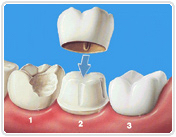
Also called caps, crowns are dental restorations that are placed over a tooth when other procedures like bonding are simply not enough. Inlays and onlays are similar to a partial crown, most often made of porcelain. An inlay substitutes for a filling, while on onlay covers more than just the tooth’s surface. An onlay usually replaces a filling and coats one or more of the tip of the tooth.
A crown restores your tooth’s function, enhances its aesthetic appeal and improves the health of your mouth. Crowns can be constructed of porcelain, gold and other metals, acrylic resin, or a mix of these materials. Most crowns are made from porcelain fused to metal or gold. A precious metal base is made and then porcelain is applied in layers over it.
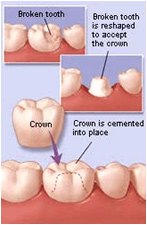
At the first visit, your cosmetic dentist will shape your teeth to stabilize your tooth structure in order to better fit the crown. Once your teeth have been prepared for your crowns, your cosmetic dentist will take impressions of your teeth and send them to the dental lab for further restorations. At this time, you and your dentist can choose the shape, size and color of the crown. While you’re waiting for the permanent restoration, your cosmetic dentist will insert a temporary one inside your mouth.
At the second visit, your dentist will take out your temporary restoration and replace it with your new crown. After the crown has been adjusted to your tooth, an adhesive agent is applied to permanently secure it.
When are Dental Crowns Used ?
In some cases, the dentist may need to perform a root canal before inserting dental crowns. If this occurs, the dentist must construct the foundation for the dental crown after root canal therapy. This is known as “post and core” foundation.
On your first visit, your dentist will examine and prepare your tooth by taking X-rays. Before making your crown, your dentist will administer local anesthetics to numb your tooth and gum tissue. The tooth is then prepared to make room for the crown.
An impression of the tooth and neighboring teeth is made, and while the crown is being developed, a temporary acrylic crown covers the tooth. Temporaries as they are commonly referred to are worn until your permanent crown comes back from the dental lab.
The impressions are sent to a dental laboratory to create the permanent crown. This permanent crown will be returned to the dental office in 3-7 days and sometimes sooner depending on turn around time.
At your second visit, your dentist will remove the temporary crown and examine the fit of the permanent one. Once the crown is a good fit and colour, the dentist will administer a local anesthetic to insert the new, permanent crown.
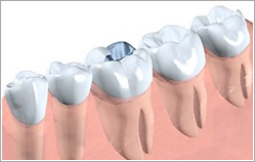
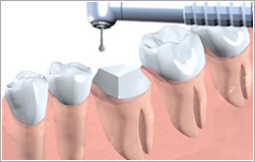
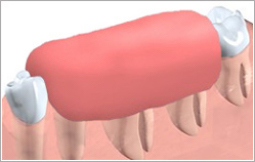
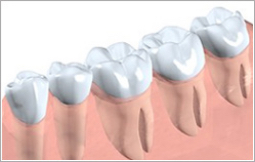
Why use Dental Crowns?
When a tooth is cracked, decayed, or damaged, a crown may need to be fitted onto the tooth. Crowns can whiten, reshape, and realign existing teeth, adding to a healthy and vibrant smile.
For instance:
- ou may have discoloured fillings and would like to improve the appearance of the tooth.
- You may have had a root filling which will need a crown to protect it.
- You may have had an accident and damaged the tooth.
- It may be needed to help hold a bridge or denture firmly in place.
- The tooth may have been weakened by having a very large filling.